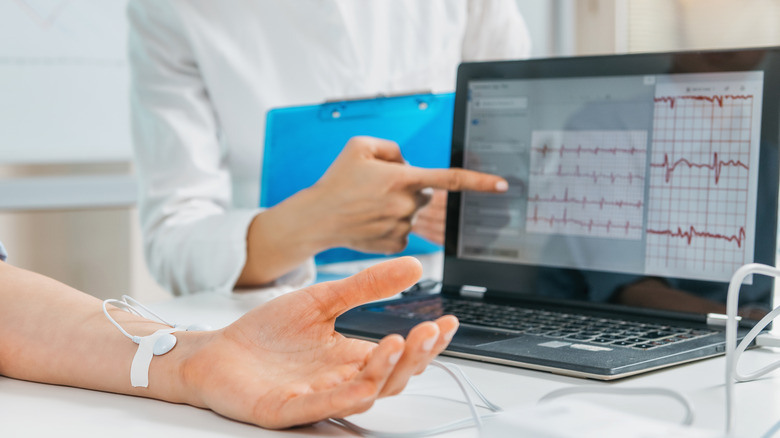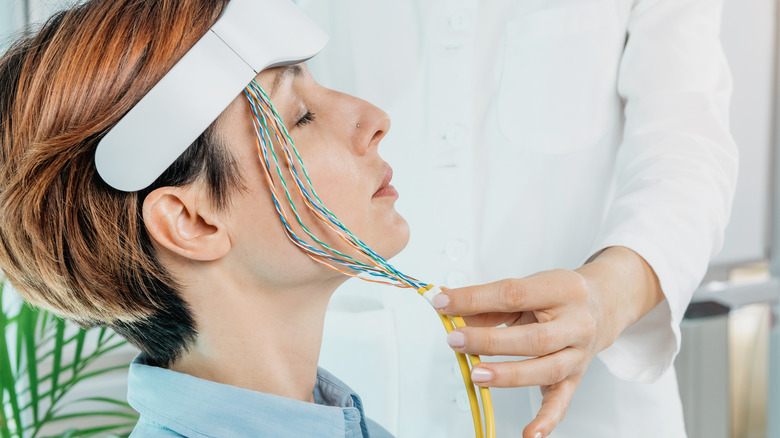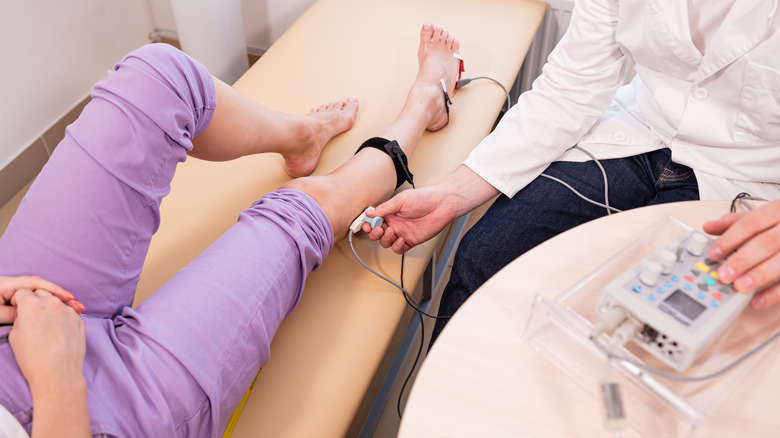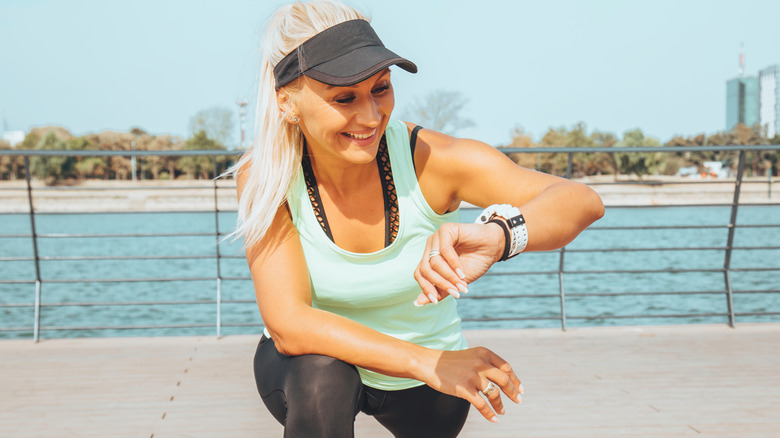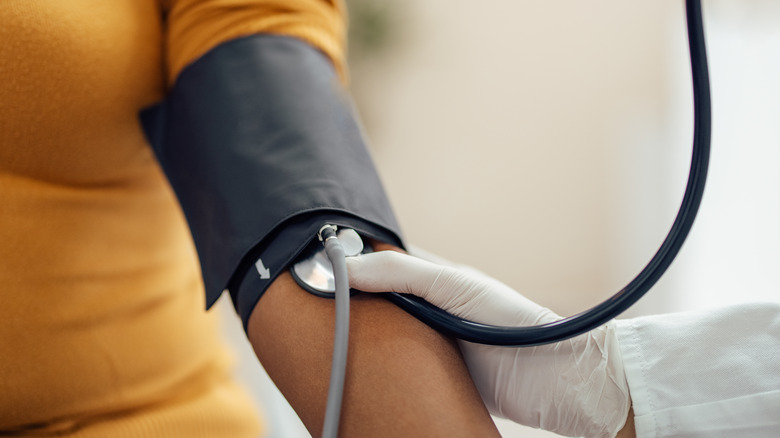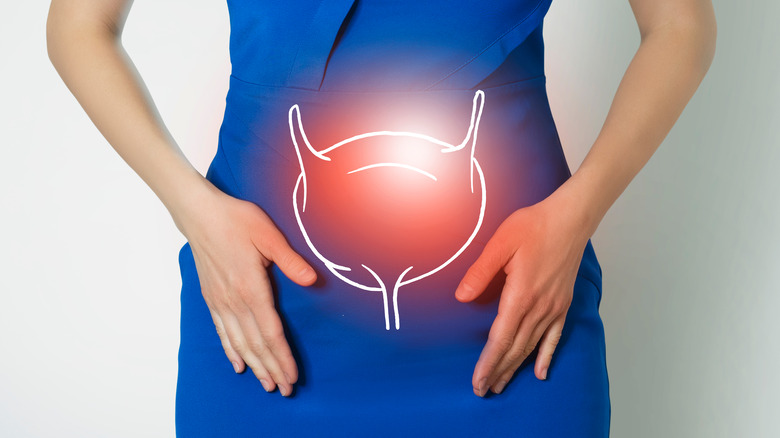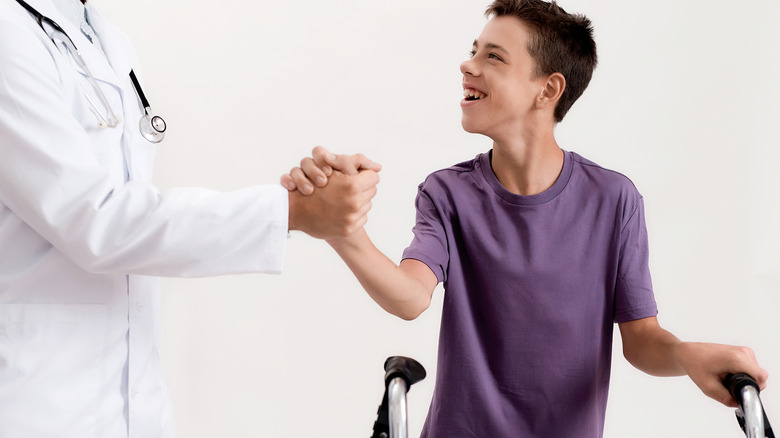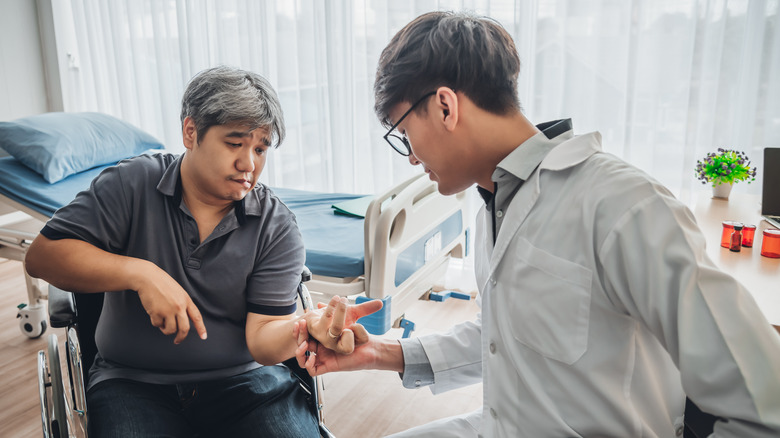The Ultimate Guide To Biofeedback Therapy For Beginners
Biofeedback therapy is a technique designed to help people learn how to control certain physiological processes that would otherwise happen unconsciously, according to the Association for Applied Psychophysiology and Biofeedback (AAFP). Various instruments are used to measure specific physiological markers of an individual, such as heart rate or brainwaves, and these instruments provide the individual with data in real time that can help the individual develop associations between specific physiological states and their own behavior. The goal is for the individual to learn how subtle changes in their behavior can bring about a desired physiological state, eventually allowing the individual to achieve this state without needing to be hooked up to the instrument.
The AAFP says biofeedback therapy has been around in some form since the 1960s, but there wasn't a standardized definition until 2007, when the AAFP, the International Society for Neurofeedback and Research (ISNR), and the Biofeedback Certification International Alliance (BCIA) all met to work on standardizing a definition. This has enabled improved scientific research on biofeedback as well as a better understanding of what biofeedback therapy is among the general public. Read on to learn more about the different forms of biotherapy and how it is practiced.
Biofeedback practitioners can choose to become certified
If you're interested in trying biofeedback therapy, an important consideration is finding the right biofeedback practitioner. The Biofeedback Certification International Alliance (BCIA) explains that certification is voluntary, meaning health practitioners who want to administer biofeedback therapy don't necessarily have to have a certification in biofeedback therapy in order to do so. However, patients may feel better choosing a practitioner who has an official certification.
The Association for Applied Psychophysiology and Biofeedback (AAFP) says it's best to find a biofeedback therapy practitioner who has a biofeedback certification in order to ensure a high standard of care. At a minimum, they suggest working with a health practitioner who has a certification in a "health-related field," or who works under the supervision of a practitioner who has such a certification. But ideally, their certification should be in biofeedback therapy.
The BCIA has a searchable database that allows you to find biofeedback practitioners who are certified. Additionally, Psychology Today has a tool that allows you to search for biofeedback practitioners in your area, though you'll have to check their profiles to see what sort of certifications they have. And of course, another important consideration is the type of biofeedback therapy you're interested in trying.
Brain wave and neurofeedback
One of the most popular types of biofeedback therapy is brain wave and neurofeedback therapy. A review from Basic and Clinical Neuroscience says that there are seven different types of neurofeedback, each tailored to specific goals. The most common type of neurofeedback is frequency/power neurofeedback, which uses 2 to 4 electrodes attached to the user's scalp. The goal is to change the speed or amplitude of certain specific brainwaves, and this type of neurofeedback can be used to treat insomnia, anxiety, or ADHD. Other types of neurofeedback use different techniques to treat a wide variety of conditions, including epilepsy, migraines, traumatic brain injury, fibromyalgia, depression, anger, addiction, obsessive compulsive disorder, and more.
Additionally, the review explains that there are different protocols for different brainwaves, including the alpha protocol, the beta protocol, the delta protocol, the gamma protocol, and the theta protocol. Each brainwave has different effects. For instance, alpha waves are typically associated with relaxation, while gamma waves are associated with cognitive processing and memory.
While neurofeedback has been shown to improve many conditions, its effects may not last very long after treatment stops. The authors also comment that it's a very expensive treatment that isn't typically covered by insurance. It may be a good option for those who have the time and resources to commit to it, but for many, it will be prohibitively expensive.
Respiratory feedback
Respiratory feedback is another type of biofeedback therapy. A randomized controlled trial from the Journal of Medical Internet Research suggests respiratory feedback is especially useful for the purposes of treating stress and anxiety. This study induced stress and compared the effects of two different treatments, splitting participants into three groups: one group used a breathing app that provided respiratory feedback, one group did a mindfulness body scan, and one group served as a control and didn't do anything.
The authors found the breathing app to be significantly more effective for the purposes of stress recovery than the mindfulness body scan. This makes sense, as there is a well-established association between breathing patterns, stress, and relaxation. Harvard Health explains that shallow breathing or "chest breathing" can trigger anxiousness, while deep breathing or "diaphragmatic breathing" can lower your heart rate and blood pressure, creating feelings of relaxation.
Another study from Cognition and Emotion describes the intimate connection between breathing patterns and emotions. This was actually two studies: The first study measured participants' breathing patterns in response to various emotional stimuli, and in the second study, participants were then instructed to practice those breathing patterns without any stimuli. Unsurprisingly, the participants' emotional states changed based on the type of breathing pattern they were instructed to practice.
Heart rate feedback
Another common type of biofeedback therapy is heart rate feedback. A study from PLoS One shows that heart rate feedback can help people regulate their emotional responses. In the first part of this study, participants learned how to lower their heart rate using biofeedback therapy, with varying levels of success. In the second part of the study, participants were shown pictures meant to arouse negative emotions, and they were asked to lower their heart rates without the help of biofeedback. The researchers found that participants who had the most success with the first part of the experiment were best able to lower their heart rates in response to the negative images. This study shows it is possible to learn how to lower your heart rate in distressing situations, though some individuals may have more success than others.
Heart rate feedback can also be useful during exercise. A randomized controlled trial from Frontiers in Psychology studied the effects of heart rate monitors on teenaged students during physical education class, dividing students into two groups: one group received the heart rate monitors, while the other didn't. Both groups were instructed to run for 30 minutes, but enjoyment as well as exertion was higher in the heart rate monitor group. The researchers conclude that having real-time feedback about your heart rate may increase motivation during physical activity.
Muscle contraction feedback
Muscle contraction feedback is a type of biofeedback therapy that engenders improved control over one's muscles. A randomized controlled trial from the Journal of Orthopaedic and Sports Physical Therapy found muscle contraction feedback could help people learn to control the multifidus muscle, i.e. the muscles around the spinal cord that help to stabilize the back. All participants in this study were given instructions on activating this muscle, but one group received real-time visual biofeedback via ultrasound that showed them when this muscle was contracting, while the other group did not. While both groups improved their ability to control this muscle, the most improvement was seen in the biofeedback group. Additionally, the biofeedback group kept their improvements in controlling this muscle for at least two weeks after the study, while the other group's performance decreased.
Another randomized controlled trial from Frontiers in Human Neuroscience studied the effects of biofeedback on pelvic floor muscle contraction in healthy pregnant women, aiming to determine how many sessions of biofeedback therapy were necessary to have an effect. In this study, half the participants received one biofeedback session, while the other half didn't. The researchers found that the participants who had received a single session of biofeedback therapy significantly improved their pelvic floor muscle contractions.
Sweat gland activity
Biofeedback therapy can be used for sweat gland activity, which may be of particular concern to those who have hyperhidrosis (a condition characterized by excessive sweating of the hands, feet, and/or underarms). An article from Clinics in Dermatology claims special instruments that measure sweat gland activity and provide visual or auditory feedback can be used to improve sweat gland function. As the authors explain: "Relaxation assisted by biofeedback can have a positive effect on inflammatory and emotionally triggered skin conditions," and this includes excessive sweating.
That said, little current research exists on the effects of biofeedback for treating excessive sweating or hyperhidrosis. A frequently-cited study from 1980 tested the effects of biofeedback therapy on 14 individuals with hyperhidrosis, and 11 of those individuals saw substantial improvements in their condition up to six weeks after the treatment ended. The researchers suggest relaxation was the primary avenue through which participants learned to lower their sweat activity. However, more research is needed to confirm the findings of this study, which is now several decades old.
Temperature feedback
Another type of biofeedback therapy is temperature feedback. As the Mayo Clinic explains, sensors are attached to your hands or feet that measure blood flow, which can be used as an indicator of stress. When your body is under stress, the temperature of the skin on your hands and feet tends to drop, whereas relaxation can increase blood flow to these areas, subsequently raising the temperature. As a stress-reduction technique, temperature feedback can be used to help people learn how to raise the temperature of their hands or feet.
A randomized controlled trial from the Journal of Head and Face Pain tested the effects of temperature feedback on individuals with migraines. One group received auditory feedback on the temperature of their fingers, while the other group received random feedback that wasn't related to the temperature of their fingers. The group that received actual biofeedback was better able to raise the temperature of their skin than the control group.
However, one interesting finding of this study is that both groups experienced improvements in their headaches, even though only one group was actually able to change the temperature of their skin. The researchers hypothesize that this may be the result of a placebo effect that was unrelated to the skin's temperature changes.
At-home devices
While biofeedback therapy can be effective for treating a variety of conditions, it can also be time-consuming and prohibitively expensive (via a review from Basic and Clinical Neuroscience). What's more, it may be difficult to find a practitioner in your area who has the right biofeedback certification. Thankfully, there is another option: at-home devices that can be used without supervision from a practitioner. While these devices also tend to be expensive, they aren't as expensive as multiple sessions with a certified practitioner.
As the Mayo Clinic explains, these devices can take a variety of different forms. Some are wearable devices that go around your waist to measure breathing, or headbands that can measure brainwave activity. These devices can be hooked up to your phone or computer to give you feedback in real time. For instance, a heart rate monitor might be attached to your finger, but it would also be able to send information to your computer or phone.
It's also worth noting that you may not even need a specialized sensor: If you have a mobile phone with a camera, there are apps you can download that will measure your heart rate using your phone's camera. Per Healthline, some of these apps provide data that is accurate enough to be trusted by cardiologists and researchers. Of course, it's always a good idea to talk to your doctor or healthcare provider if you're considering trying one of these at-home devices.
Biofeedback therapy may lower stress and anxiety
Biofeedback therapy can have a wide variety of effects, depending on the goals of the patient and/or practitioner. One of the most common effects of biofeedback therapy is reduced stress and anxiety. A meta-analysis from Psychological Medicine that analyzed 24 studies on heart rate biofeedback found this to be a very effective method for reducing self-reported stress and anxiety.
But heart rate feedback isn't the only type of biofeedback that can help to alleviate stress. Many other forms of biofeedback can accomplish this as well. For instance, a randomized controlled trial from the Journal of Medical Internet Research found respiratory feedback could also help to reduce stress and anxiety. This study compared the effects of a breathing app to those of a mindfulness body scan in response to stress, and the researchers found the breathing app had a significantly greater effect on participants' ability to lower their feelings of stress than the mindfulness body scan.
Can biofeedback therapy help lower chronic pain?
Another positive effect of biofeedback therapy is its potential to help lower chronic pain. A review from Current Pain and Headache Reports that looked at a variety of alternative treatments for chronic pain found biofeedback therapy to be effective for the purposes of reducing chronic pain.
There are a variety of types of biofeedback that could be useful in reducing pain. For instance, the Mayo Clinic says muscle contraction feedback may be useful in identifying tense muscles that could be causing headaches or other aches or pains. Learning to relax these muscles through the use of biofeedback could help provide relief for these headaches or pains.
Respiratory feedback could also be useful in reducing chronic pain. A study from the Journal of Pain tested the effects of slow, deep breathing on the experience of pain using a within-subjects design, meaning they had each participant try four different breathing patterns and analyzed how the same participant responded to the different patterns. The researchers found the slow, deep breathing pattern with the longest exhale had the most effect on reducing the participants' experience of pain, suggesting respiratory feedback can help with the management of pain.
Biofeedback therapy may help lower blood pressure
Biofeedback therapy can also be used to lower blood pressure. A meta-analysis from Hypertension Research that analyzed 22 randomized controlled trials on the effects of biofeedback on individuals with hypertension (high blood pressure) found biofeedback therapy more effective than no treatment for lowering blood pressure. That said, the researchers claim that biofeedback therapy was only found to be more effective than a placebo treatment when it was performed in conjunction with relaxation techniques. For this reason, they say it remains unclear whether or not the effect of biotherapy on lowering blood pressure is simply a result of the relaxation response (which is known to lower blood pressure), and further research is needed to clarify whether or not biofeedback therapy can lower blood pressure independently of the relaxation response.
But even if biofeedback therapy is only able to lower blood pressure by means of activating the relaxation response, the fact remains that it can effectively lower blood pressure, and there are other advantages to activating the relaxation response. The Mayo Clinic says the FDA has approved a biofeedback therapy device for home use for the purposes of lowering stress and blood pressure, which go hand-in-hand. This is a respiratory feedback device that encourages deep breathing, known to aid relaxation and lower blood pressure.
Urinary incontinence and biofeedback therapy
Biofeedback therapy can help to treat urinary incontinence in women by helping them learn how to control the pelvic floor muscles. A study from Therapeutic Advances in Urology that discusses biofeedback for urinary incontinence in women explains that weakened pelvic floor muscles are often the cause of urinary incontinence, and muscle contraction therapy can enable patients to learn how to contract these muscles. For this type of biofeedback, a vaginal probe is used to detect muscle pressure, which is then recorded and displayed visually so that the user can react to it in real time, learning what to do in order to contract these muscles.
A randomized controlled trial from Frontiers in Human Neuroscience shows that this method can be effective. In this study, pregnant women learned how to contract their pelvic floor muscles after just one session of biofeedback therapy. Compared to a control group, the women in the biofeedback group were much better able to perform pelvic floor muscle contractions with proper technique. Though this study didn't look at urinary incontinence specifically, the fact that biotherapy can be used successfully to improve pelvic floor muscle contractions shows promise for treating urinary incontinence.
Biofeedback therapy can improve symptoms of cerebral palsy in children
A clinical trial from the Journal of Child Neurology shows biofeedback can help improve symptoms in children with cerebral palsy. In this study, a specially-designed, portable electromyography (EMG) device was used for five hours a day over the course of a month that measured muscle activity and provided feedback through vibrations. All children who completed the study showed significant improvement in their muscle control. While only 10 children completed the study, the results are promising and warrant further research.
Of course, using a device for five hours a day over the course of a month may not be feasible for many people. However, a systematic review from Disability and Rehabilitation on the effects of biofeedback therapy for improving the symptoms of cerebral palsy points out that it is possible for biofeedback therapy to be practiced too frequently. The authors explain that sessions that occur too frequently might prohibit autonomous learning in the patient. In other words, it may be important to take breaks in between sessions to practice the changes in behavior without the help of the biofeedback devices, which of course is the ultimate goal of biofeedback therapy.
Hemiplegia (one-sided paralysis) and biofeedback therapy
Biofeedback therapy may also have useful applications in treating hemiplegia, or one-sided paralysis, according to a randomized controlled trial from Acta Neurologica Belgica. In this study, patients who had experienced a traumatic injury cutting off blood flow to the brain, subsequently developed hemiplegia, and had difficulty walking were divided into two groups. One group received electromyography biofeedback, and the other group served as a control. Both groups received traditional physical therapy, but the biofeedback group wore an ankle device that measured activity in the ankle muscles and provided visual and auditory feedback. The device was worn for five days a week, for a total of three weeks.
While both groups had improved range of motion, the biofeedback group had more significantly improved their range of motion than the control group. More importantly, the biofeedback group had significant changes in the activity of their ankle muscles (where the device was applied), whereas the control group didn't have any changes in these muscles. Thus, biofeedback therapy is a promising treatment for improving outcomes in patients with hemiplegia.

